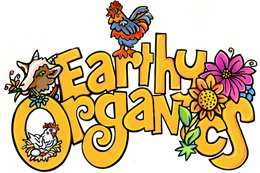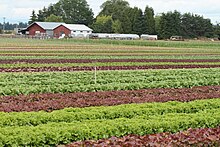Community-supported agriculture
The term "community-supported agriculture" was coined in the northeastern United States in the 1980s, influenced by European biodynamic agriculture ideas formulated by Rudolf Steiner.[4] Two European farmers, Jan Vander Tuin from Switzerland and Trauger Groh from Germany, brought European biodynamic farming ideas to the United States in the mid-1980s.[4] Vander Tuin had co-founded a community-supported agricultural project named Topinambur located near Zurich, Switzerland. Coinage of the term "community-supported agriculture" stems from Vander Tuin.[5] This influence led to the separate and simultaneous creation of two CSAs in 1986. The CSA Garden at Great Barrington was created in Massachusetts by Jan Vander Tuin, Susan Witt, and Robyn Van En. The Temple-Wilton Community Farm was created in New Hampshire by Anthony Graham, Trauger Groh, and Lincoln Geiger.[4]
The CSA Garden at Great Barrington remained together until 1990 when many members left to form the Mahaiwe Harvest CSA. One of the original founders, Robyn Van En, became incredibly influential in the CSA movement in America and founded CSA North America in 1992.[4] The Temple-Wilton Community Garden was more successful and still operates as a CSA today. It became an important member of the Wilton community and it receives funding from state, federal, and local sources.[4]
A parallel model called Teikei existed in Japan as early as the mid 1960s. Similarly, Dr. Booker T. Whatley, a professor of agriculture in Alabama, advocated for Clientele Membership Clubs as early as the 1960s.[6]
Since the 1980s, community supported farms have been organized throughout North America — mainly in New England, the Northwest, the Pacific coast, the Upper-Midwest and Canada. North America now has at least 13,000 CSA farms of which 12,549 are in the US according to the US Department of Agriculture in 2007.[7] The rise of CSAs seems to be correlated with the increase in awareness of the environmental movement in the United States. Some examples of larger and well established CSAs in the US are Angelic Organics, Golden Earthworm Organic Farm [8] Phillies Bridge Farm Project, and Roxbury Farm.[9] CSAs have even become popular in urban environments as proven by the New York City Coalition Against Hunger's own CSA program that maintains locations in all five boroughs of the city.[10] The largest subscription CSA with over 13,000 families is Farm Fresh To You in Capay Valley, California.[11] The Québec CSA network (17 years old in 2012) is one of the largest in the world. It is a unique system where a non-profit organization reaches the customers for the farmers and provide these farmers with technical support. More than one hundred farms are part of this network. Some CSAs are used by farmers, such as Sugar Mountain Farm in Vermont, to finance improvements and new infrastructure.[12]
Since 2008, the international CSA network Urgenci has been coordinating dissemination and exchange programmes that have resulted in the creation of dozens of small-scale CSA in Central and Eastern Europe.[citation needed]
CSA was introduced to China following a series of food safety scandals in the late 2000s. It was estimated that there were more than 500 CSA farms in China by 2017. They have been a critical force in the development of the organic and ecological farming in China. Chinese CSA farmers, researchers and civil society organizations gather annually at the national CSA symposium held since 2009.[13]
Much of the growth in women labour participation in agriculture is outside the "male dominated field of conventional agriculture". In community supported agriculture women represent 40 percent of farm operators.[14]



